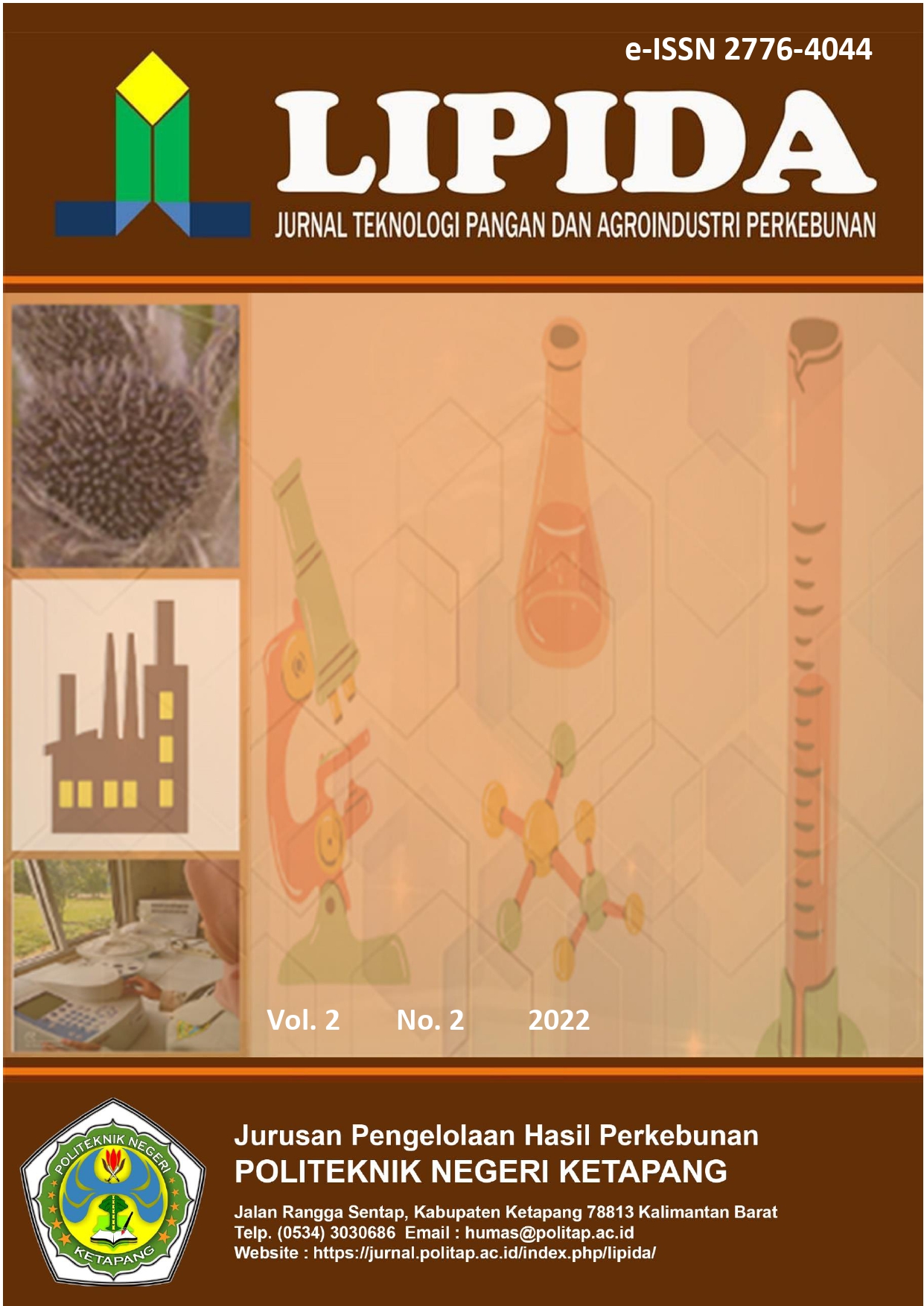Karakteristik Kimia dan Analisis Sensori Pada Dodol Nanas Dengan Perbandingan Tepung Ketan dan Tepung Beras
 https://doi.org/10.58466/lipida.v2i2.1393
https://doi.org/10.58466/lipida.v2i2.1393
Keywords:
Pineapple Dodol, Moisture Content, Organoleptic.Abstract
Dodol made from pineapple fruit ingredients is likely to add to the diversity of dodol that already exists in the market. In addition, it can also increase the economic value of pineapple fruit. The goal to be achieved is to determine the influence of various differences in the addition of glutinous rice flour and rice flour on the chemical and organoleptic properties of pineapple dodol. This type of research is to use an experimental method using a list of fingerprint analysis. The process of making pineapple dodol is made with four variations of the ratio of ingredients, namely the first addition of glutinous rice flour 15 gr and rice flour 5 gr, the second addition of glutinous rice flour 5 gr and rice flour 15 gr, the third addition of glutinous rice flour 20 gr and the fourth addition of rice flour. 20 gr. The water content contained in the D treatment (rice flour 20%) has a higher water content of 33.86% this is due to the increasing concentration of rice flour, there is an increase in the water content of pineapple dodol. This is due to the addition of rice flour. because of the starch property that is to like water.
References
Anonymous,2009. Bahan makanan. http://id.wikipedia.org/wiki/santan.
Astawan dan Wahyuni, 1991. Teknologi Pengolahan Pangan Nabati Tepat Guna. Dalm Irawati, R,2001. Pembuatan Dodol Waluh (Kajian Penambahan Tepung Ketan dan Terigu Serta Gula Pasir) Tehadap Sifat Fisik, Kimia dan Organoleptik. Skripsi Fakulta Teknologi Pertanian. Universitas Brawijaya, Malang.
Astawan, M., S. Koswara, dan F. Herdiani. 2004. Pemanfaatan Rumput Laut (Eucheuma cottonii) untuk Meningkatkan Kadar Iodium dan Serat Pangan pada Selai dan Dodol. Jurnal Teknologi dan Industri Pangan. Vol XV. No. 1. Th 2004
Desrosier, N. W. 1988. Teknologi Pengawetan Pangan. UI Press, Jakarta.
Gautara dan Soersano, 2005.Dasar Pengolahan Gula.IPB,Bogor.
Retnowati, D. 2006. Pemanfaatan Terung sebagai Bahan Pembuatan Dodol. Skripsi Teknik Elektro , Fakultas teknik, Universitas Negeri Semarang.
Repelita Kallo, 2012. Pengolahan Hasil Pertanian. Balai Pengkajian Teknologi Pertanian (BPTP). Sulawesi Selatan.
Satuhu dan Sunarmani, 2004. Membuat Aneka Dodol buah. Penebar Swadaya. Jakarta.
Satuhu, S Dan Sunarmani, 2004. Membuat Aneka Dodol Buah. Penebar Swadaya, Jakarta.
SNI, 1992. Dodol. SNI 01-2986-1992. Pusat standarisasi industri. Departemen perindustrian, Jakarta.
Soekerto, 2002. Penilaian organoleptik untuk industri pangan dan hasil pertanian. Bharatara karya aksara, Jakarta.
Sugiyono,2002.Ilmu Pengetahuan Bahan Pangan. PAU, Pangan dan Gizi IPB, Bogor










